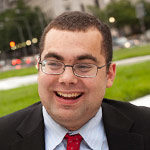
Teen Wins Award For A Coding Program
In 2020, Sreenidi Bala, a teenager from Farmington, Connecticut, started a passion project that would change the lives of hundreds of autistic students.
Ten years ago, I joined the Autistic self-advocacy movement because the state of our national conversation on autism was terrible. At the time, few opportunities existed for Autistic advocates to have a voice in discussions about research, policy, and service provision relevant to our lives. Many autism organizations refused to so much as acknowledge the existence of an Autistic community, with distinct and different perspectives from the parent advocacy movement.
The autism world has changed in the last 10 years. Today, Autistic adults still face discrimination and exclusion from autism research and policymaking – but the tide has begun to turn, with Autistic activists talking to policymakers, Autistic researchers in our universities, and a growing generation of Autistic adults who have grown up committed to the idea that our voices matter.
Each year, in my work with the Autistic Self Advocacy Network (ASAN), I have the honor and privilege of meeting emerging Autistic leaders participating in ASAN’s leadership academies. Each year, I am struck by the degree to which a growing number of Autistic youth are able to access the ideas of the neurodiversity and self-advocacy movements earlier than my generation ever did. We are now for the first time seeing the emergence of a group of Autistic adults who have known for most of their lives about both their diagnosis and the larger community of Autistic people they are a part of. We now have the opportunity to articulate and grow a positive Autistic identity, culture, and community, building on the efforts of the Autistic activists who came before us.
But with that progress comes a realization of how far we have left to go. The state of most autism research is still significantly out of step with the priorities of Autistic people and our families. In 2010, the most recent year in which a breakdown was made available by the federal government, the National Institutes of Health spent only 1.5 percent of its autism research budget on research on the needs of adults and only 2.4 percent on research on improving service quality. Most private funders are even further out of step with the real priorities of our community. Most autism researchers continue to use prejudiced or offensive language and exclude adults with autism from leadership roles in the research process.
The Autistic community has long called for a framing of autism policy and research that focuses on creating a world in which Autistic people are included and supported, not one in which we do not exist. Last year, Congress passed the Autism CARES Act, replacing the damaging and insulting Combating Autism Act with a new framing for federal autism policy. This new framing should give our friends and allies in the research community an opportunity to reboot their thinking on including Autistic people. This April, ask yourself – how can I be a part of the solution, and not a part of the problem? What can I do to support Autistic people in my life to take leadership roles in autism research and policymaking? How can I make my work more accessible and inclusive of the Autistic community? As we think about the next 10 years, it is time for the research community and the community at large to welcome those with the most at stake in autism research: Autistic people ourselves. We look forward to your partnership.
 Ari Ne’eman is the president and co-founder of the Autistic Self Advocacy Network, an advocacy organization run by and for adults with autism. He is a member of the National Council on Disability, a federal agency charged with advising Congress and the president on disability policy issues. From 2010 to 2012, he served as a public member to the Interagency Autism Coordinating Committee, a federal advisory committee that coordinates all efforts within the Department of Health and Human Services concerning autism. He also served as an advisor to the American Psychiatric Association’s DSM-5 Neurodevelopmental Disorders Workgroup, helping to develop the DSM-5 diagnostic criteria for autism.
Ari Ne’eman is the president and co-founder of the Autistic Self Advocacy Network, an advocacy organization run by and for adults with autism. He is a member of the National Council on Disability, a federal agency charged with advising Congress and the president on disability policy issues. From 2010 to 2012, he served as a public member to the Interagency Autism Coordinating Committee, a federal advisory committee that coordinates all efforts within the Department of Health and Human Services concerning autism. He also served as an advisor to the American Psychiatric Association’s DSM-5 Neurodevelopmental Disorders Workgroup, helping to develop the DSM-5 diagnostic criteria for autism.